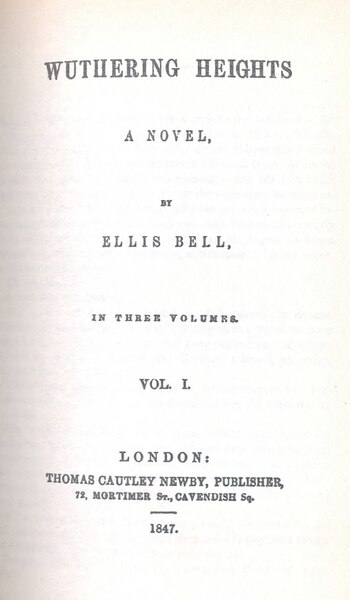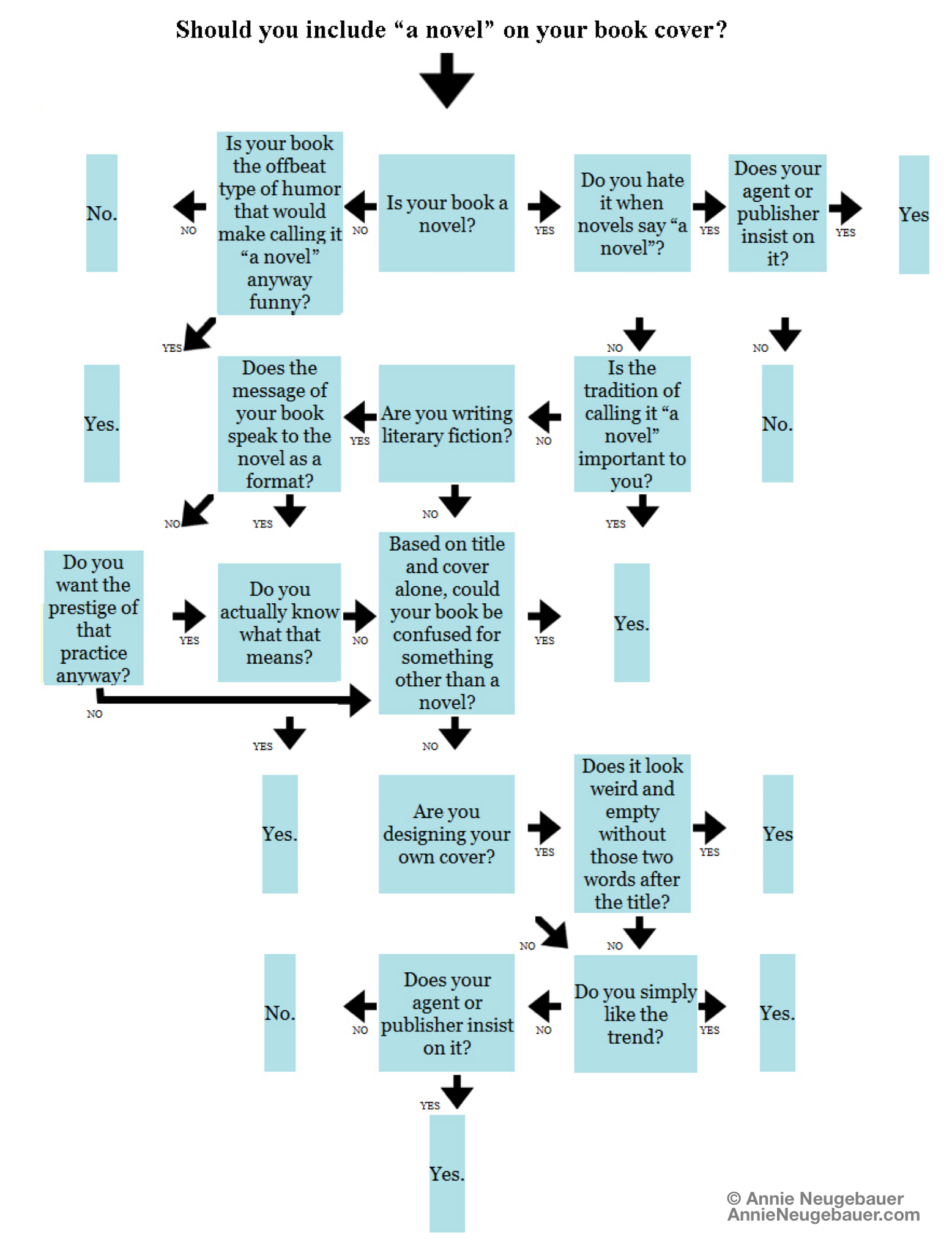Ever notice how some novels have “A Novel” written right on the cover, under the title? Maybe you have but haven’t thought about it. Or maybe it drives you insane. But if you tread in bookish enough circles, the subject will come up eventually.
The gist of it is… why? It seems obvious and redundant, possibly even snooty and declarative. Some people love it, some hate it, but no one seems to quite know why it’s done. I have some thoughts!
A Brief History
Now I’m not going to drag you through a complete history lesson of the novel, but I will say that as a literary format, it’s a relatively new invention. Lyrics, poetry, plays, journals, and essays are all much older. The novel, roughly recognizable as how we think of it today, didn’t gain any continuous popularity until the 18th century.
Take, for example, the first edition of Wuthering Heights.
You can see on the title page that it says “A novel by [Emily Brontë’s pen name]”. This was published in 1847. Nowadays, a book with this title would likely leave off “a novel” and shelve it under fiction. But that’s because for us, today, a novel is the default. (That format won the literary battle, for now. Hurrah, novels!) If we’re told to read “this really good book,” most of us will assume it’s a novel unless otherwise specified.
Back then, however, people were still assuming things were essays, memoirs, travel journals–not to mention that people didn’t just take a bus to the library or order something off Amazon, where the genre was clearly labeled on the shelf. So you can see that “a novel” under the title served a necessary function.
That’s all well and good, but now that “a novel” is pretty much the default these days, why has that little clarification stuck around? It isn’t cut and dry, but my best guess is that there are several reasons, often more than one at a time. I’m going to hit the highlights below, followed by a flow chart so you (if you’re a writer) can decide if you want those two little words on your book, too.
Reasons People Use it Now
Tradition– Tradition is a heady thing. Wedding vows, national symbols, school colors: our lives are steeped in it. There’s something powerful about tapping into an experience or symbol that generations before have also experienced. In one way, it makes us feel more grounded, more connected to the past. It can also be a way of acknowledging one’s lineage, tipping the hat to those who paved the way. Tradition is in most facets of our lives. Why should literature be the exception?
Literary device– Remember how literary fiction uses devices outside of plot and character to send a message? Sometimes (more often than you might think) that message involves literary history, the act of writing, the art of storytelling, the format of words… in short, it involves novels themselves. In this case, literary context becomes a device. Which is part of why you see “a novel” on so many works of literary fiction, specifically. Those two words are already communicating with you; they’re setting you into the frame of mind to understand the message.
Prestige– And because literary fiction authors have used “a novel” often enough as a literary device for it to become noticeable… no doubt there have been other authors simply trying to cash in on this association. Literary fiction has quite a bit of prestige in some circles, and those who want in might use this to their advantage. Now, who’s doing it to further their message and who’s doing it to add some clout to their name is subjective.
Clarity– Is Eat, Pray, Love, a memoir, a self-help book, or a novel? You know if you’ve read it, but if you haven’t… you really might not. What about Goodbye, Columbus? How about A Thousand Mornings? Even Who’s Your Mama, Are You Catholic and Can You Make a Roux?* If an author (or publisher) is worried that the book could be misinterpreted from the title and cover alone, they might stick “a novel” on there just to be safe. With the growing prominence of online purchasing–where genres are a tag down at the bottom rather than a shelf you walk up to–this is not necessarily a paranoid choice.
Assertion– On a related note, have you ever noticed that many experimental novels have “a novel” on the front? It’s almost like they’re saying, “I know I messed with some things, but, really, this is a novel; I promise.”
Layout– I really think that designers sometimes include these two little words to help visually balance the layout of the cover. Length of the title, size and sharpness of the images/background, plus length of the author’s name all affect how a cover looks, and sometimes adding two words in the middle might help. Don’t knock it. These things matter. (Maybe not to you, but to someone.)
Trend– And, finally, the obvious one. The one that most likely accounts for 80% of current books that say “a novel” on the cover: It’s in style! And scoff at that all you want, but covers, titles, even genres come and go over the years; this is just another bit of choice that adds flavor to a book.
*(The answers, in order, are: memoir, novel, book of poetry, cookbook.)Authors, Need Help Deciding?
This might help get you started. (Y’all have no idea how long this took me.) Click chart to enlarge.
So, what do you think about this practice?
Authors, did you include “a novel” on your book? Writers, do you plan to?
Share this:


